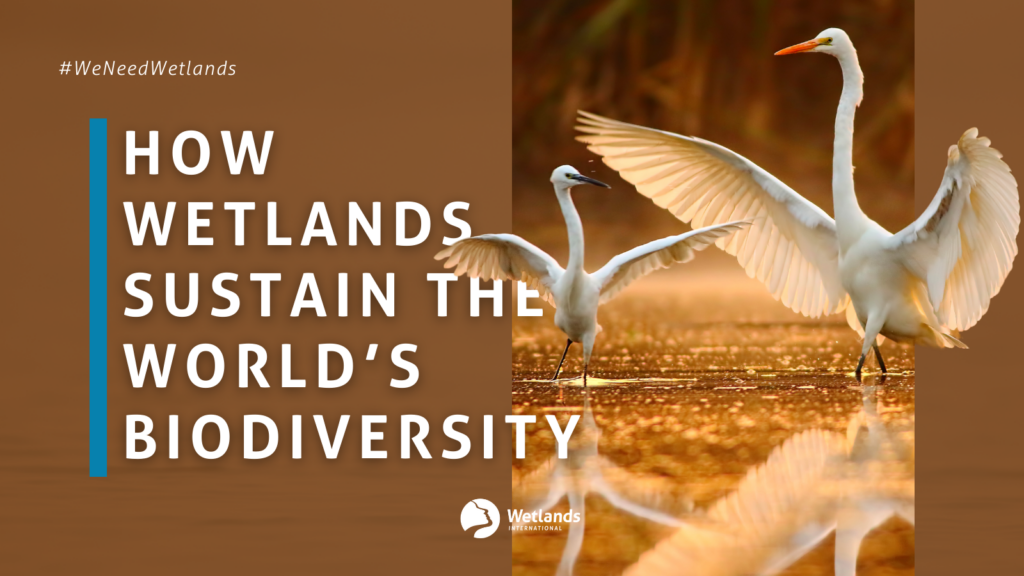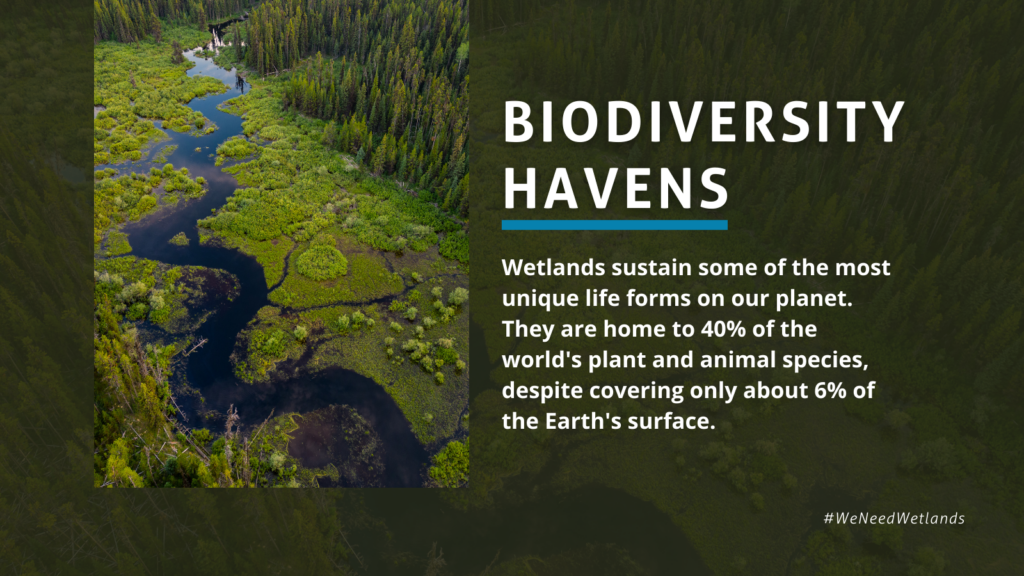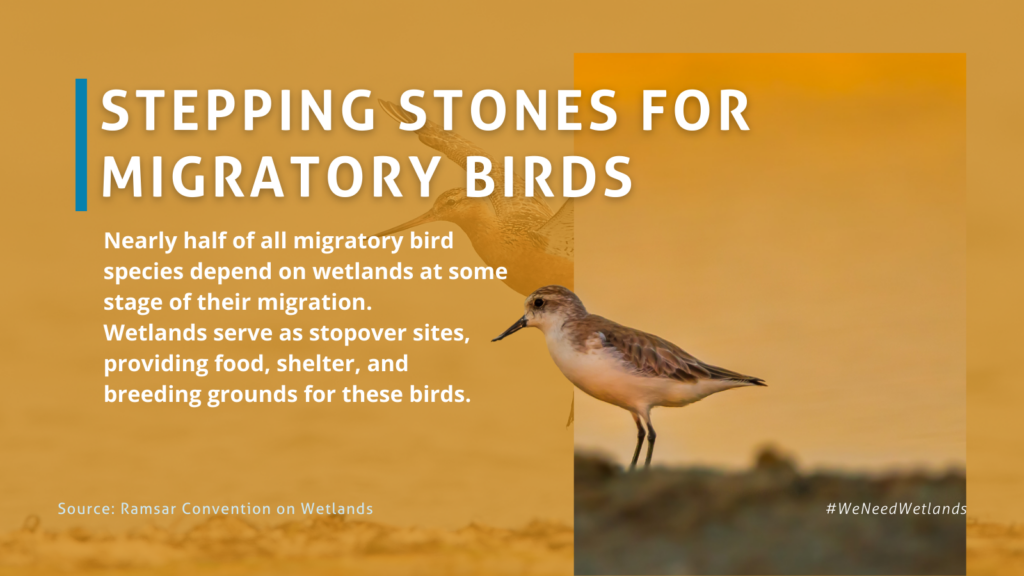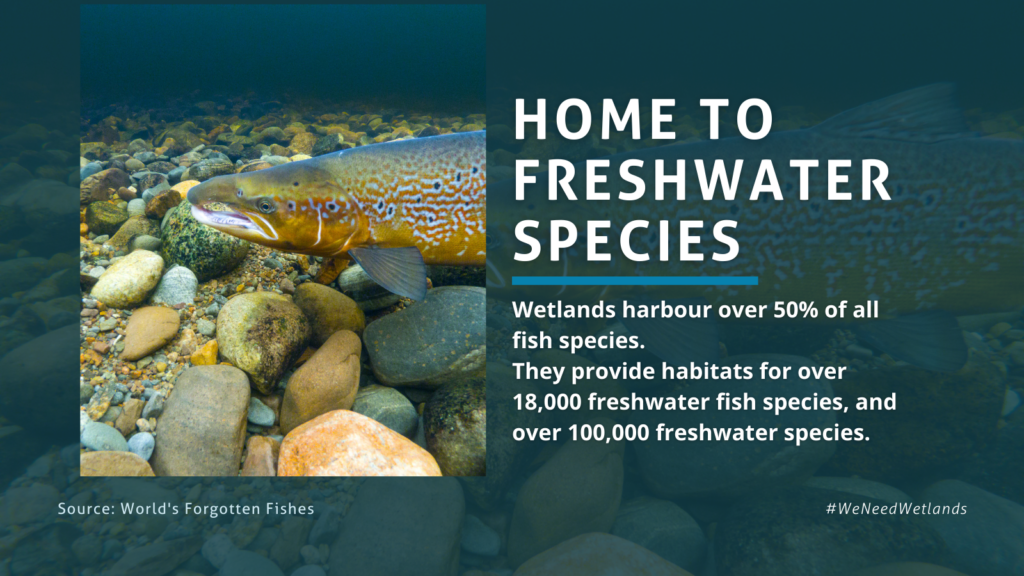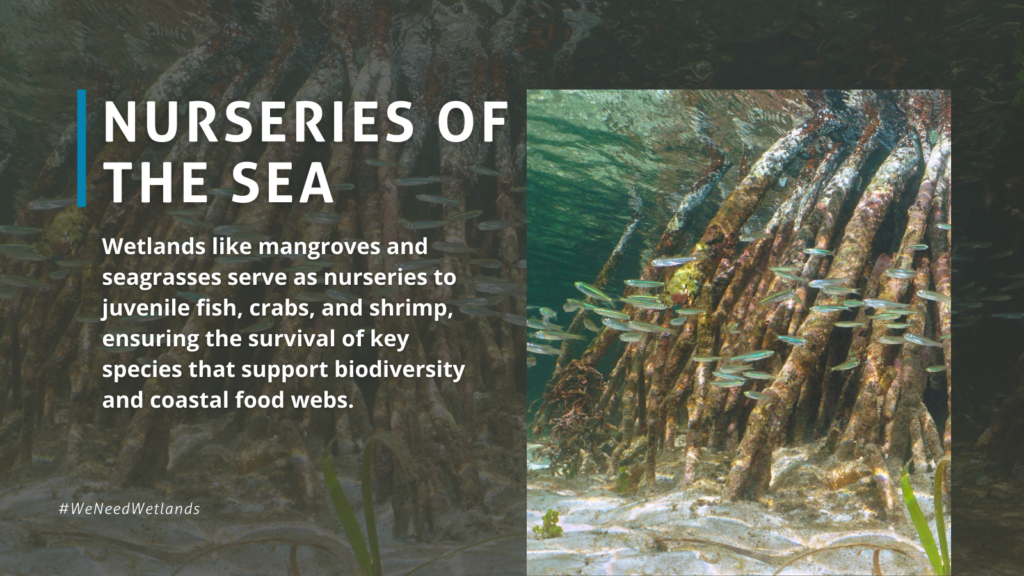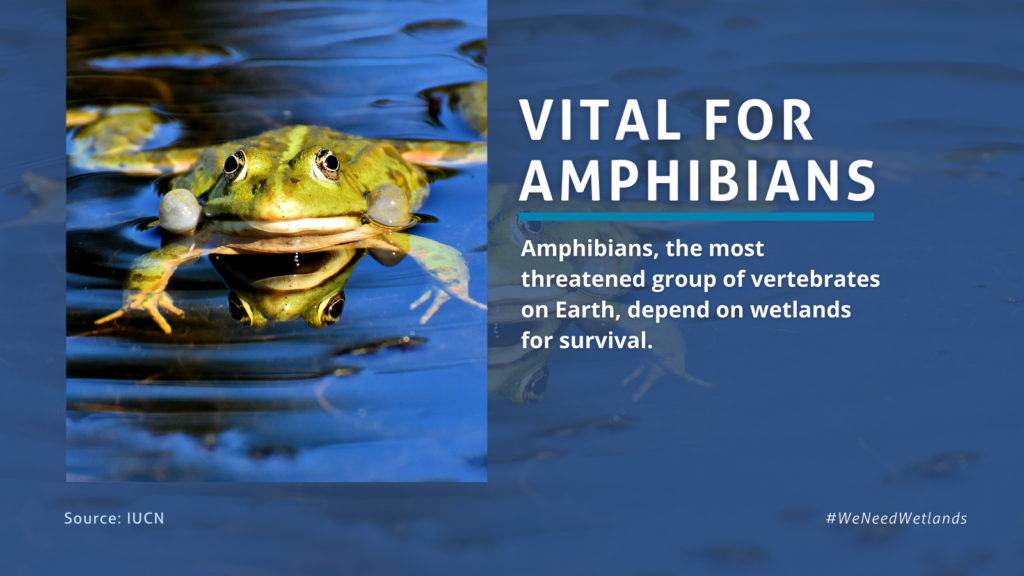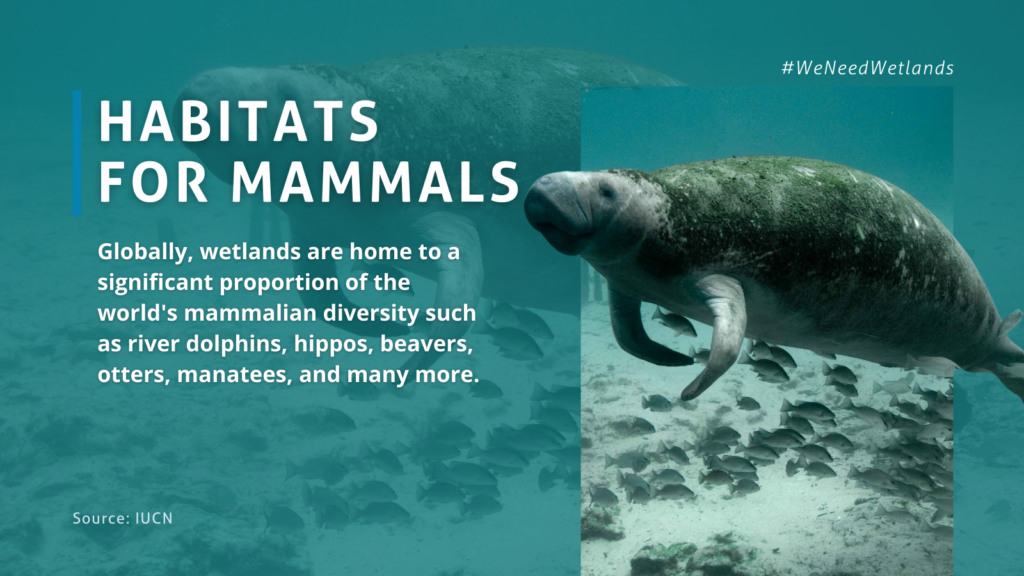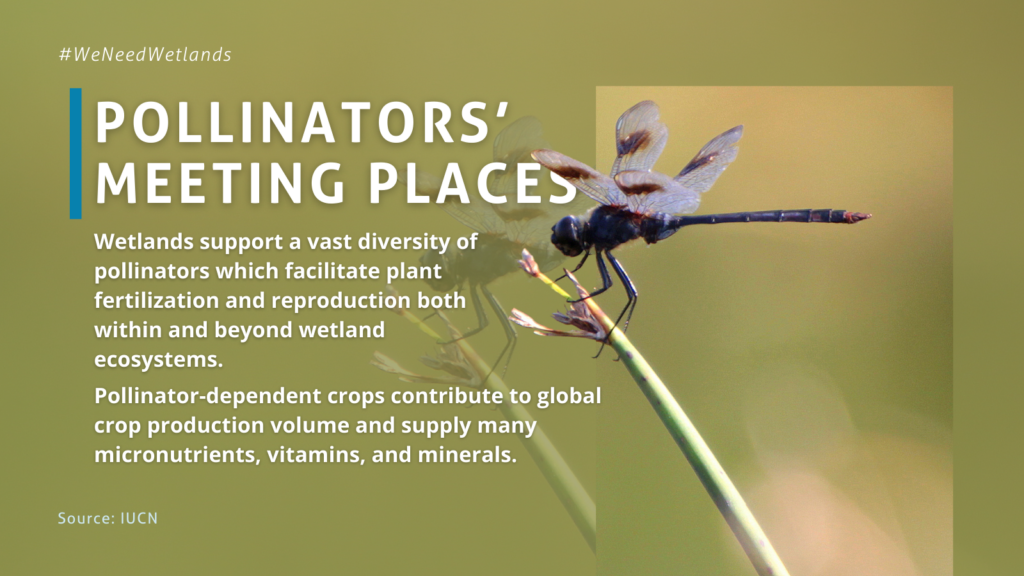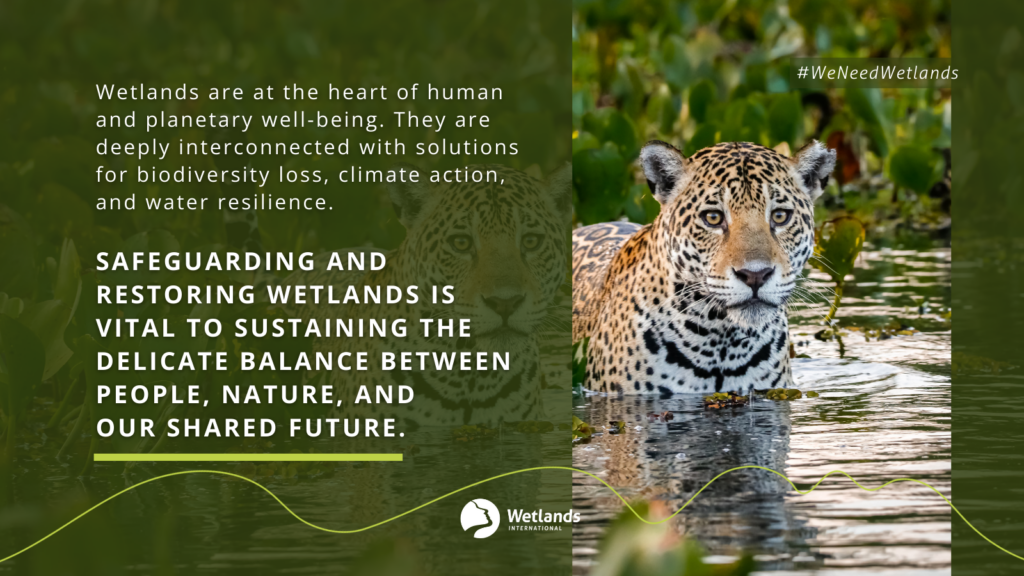
The Interconnected World of Wetlands: How Wetlands Support the Web of Life
Wetlands are nature’s meeting places — where land and water come together to create ecosystems that sustain life. These unique, in-between ecosystems act as connectors, bridging different life forms and habitats. Wetlands are not only home to an extraordinary diversity of species, they also influence the well-being of species and ecosystems far beyond their visible edges and play a crucial role in maintaining our planet’s health, maintaining the water and carbon cycles, and protecting us against the worst impacts of a changing climate.
Despite covering only about 6% of the Earth’s surface, wetlands are home to a staggering 40% of the world’s plant and animal species. These ecosystems are biodiversity powerhouses and provide home and shelter to more than 100,000 known freshwater species, millions of migratory birds, fish, amphibians, reptiles and mammals – many of which are listed as threatened or endangered.
Yet, wetlands are vanishing at an alarming rate—35% have been lost since 1970, accelerating the decline of species that depend on them.
Twice a year, millions of migratory birds embark on arduous journeys spanning across continents. Their survival relies on the wetland ecosystems that dot their flyway routes. The East Atlantic Flyway — stretching from the Arctic to Africa — sustains millions of migratory birds annually, including the critically endangered Spoon-billed Sandpiper. The East Asian–Australasian Flyway, spanning 22 countries, is home to 50 million migratory waterbirds of over 210 species. Here, for instance, a single mudflat’s loss in China can mean thousands of Red Knots lose a place to rest, refuel, and raise fledglings. Peatlands across Central Asia and Mongolia are vital nesting and resting sites for the threatened Siberian Crane during its long migration from Siberia to its wintering grounds in India.
A slideshow with 9 images
The slider is set to loop infinitely.
Migratory bird populations significantly affect our world by acting as crucial ecosystem regulators, dispersing seeds, controlling insect populations and maintaining the health of ecosystems. However, we are seeing a highly concerning decline in populations of migratory birds across the globe, disrupting food webs and ecosystem services like pollination and pest control. This ripple effect can lead to imbalances in ecosystems far beyond the birds’ breeding or migratory routes, including our food systems.
Peatlands
Peatlands sustain a rich variety of species from insect-eating sundew plants in temperate regions to tapirs in tropical climates. In the Congo Basin, the endangered Okapi, a forest-dwelling mammal, relies on peat swamp forests for shelter and food, while the beloved Bornean orangutans find home across the rich peatland forests in Indonesia’s Borneo peat swamp forests.
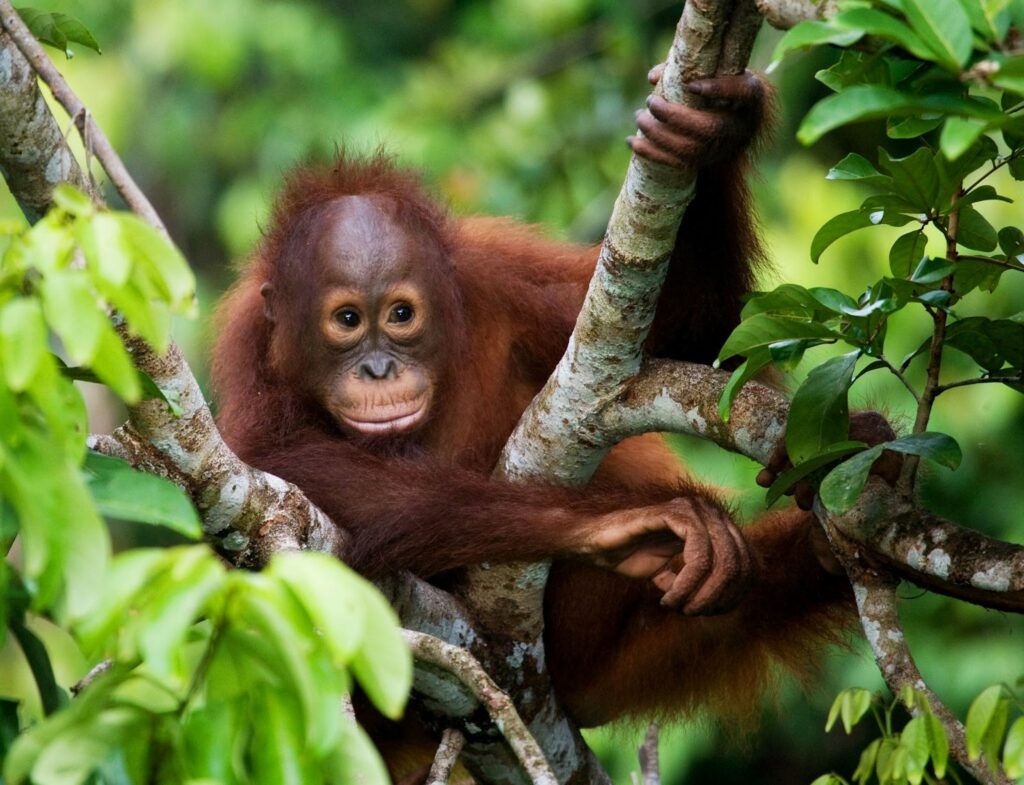
Peatlands face numerous threats but drainage is the greatest. Peatlands are drained for timber plantations and, in the tropics, to cultivate the oil palm. Drainage causes land subsidence and floods and increases the risk of fires in the dried peat, causing a chain reaction to other neighbouring ecosystems. Losing the world’s remaining peatlands threatens the survival of many species and fragile ecosystems that are connected to them.
Rivers and lakes
Over 50% of all fish species on the planet are found in fresh water like rivers, lakes and ponds. These freshwater habitats are also home to over 100,000 other freshwater species like crabs and alligators, with over 200 new ones being discovered annually. From reptiles like turtles to amphibians like frogs to mammals like manatees, these wetlands are critical for the survival of several threatened species.
Unfortunately, dams, pollution, and overexploitation are threatening freshwater wetlands, and with them, the countless species that depend on them. Between 1970 to 2020 alone, we have seen a staggering 81% collapse in population sizes of migratory freshwater fishes. Many rivers empty into the ocean, creating a domino effect between freshwater and marine habitats.
Mangroves and Seagrasses
Coastal wetlands host a wealth of marine biodiversity. Seagrass meadows support 20% of the world’s biggest fisheries, mangrove forests provide a haven to more than 1,500 plant and animal species including a vast biodiversity of commercially valuable species like shrimp and snapper.
These habitats also play an important role in maintaining the health of other biodiversity hotspots. Mangroves and coral reefs share a mutually beneficial, symbiotic relationship, often alongside seagrass beds, forming ecologically interdependent ecosystems that are essential for coastal biodiversity. Additionally, the intricate root systems of mangroves create natural corridors between ecosystems, enabling larger species to move between habitats and use mangroves as vital breeding grounds.

Our Shared Future
The interconnectedness of wetlands means their loss has far-reaching consequences. The disappearance of wetlands along key flyways affects migratory bird populations worldwide and the degradation of Amazon wetlands diminishes fish stocks globally.
But when wetlands thrive, both people and nature benefit.
This World Wetlands Day, we urge nations to protect wetlands for our common future.

